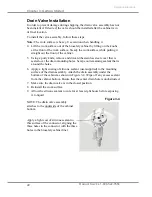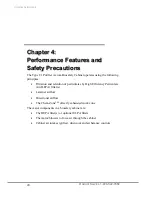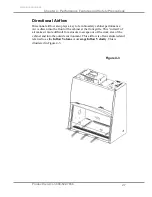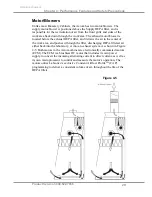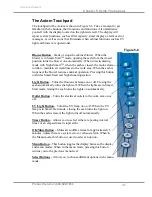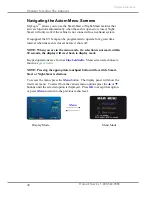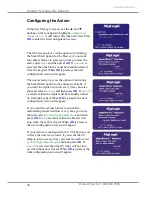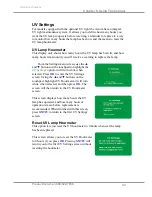
Chapter 4: Performance Features and Safety Precautions
Product Service 1-800-522-7658
31
Original instructions
Safety Precautions
Note: The biosafety cabinet should be certified by a certification technician
before its initial use. The cabinet should be recertified whenever it is
relocated, serviced or at least annually thereafter. Filter integrity and airflow
performance should be verified before using the cabinet.
Some internal components of the biosafety cabinet may become
contaminated during operation of the unit. Only experienced personnel
competent in decontamination procedures should decontaminate the cabinet
before servicing these components. If you have any questions regarding
certification agencies, or need assistance in locating one, contact Labconco’s
Product Service Department at 800-821-5525 or 816-333-8811.
If your work involves volatile toxic chemicals or radionuclides, ensure that
the Type C1 is connected to an operational exhaust system, and is properly
configured. Keep these materials in the center work area, so that any air
flowing over these materials will be directed to the exhaust HEPA filter and
out of the lab.
DO NOT load more than 50 lbs. (23 Kg) in the work area. Exceeding this
limit may damage the work surface and its supports. Excessive weight in the
cabinet may increase the risk of it overturning, or failure of hydraulic lift
stands, resulting in the cabinet and stand overturning. If your application
requires loading more than 50 lbs., contact Labconco’s Product Service
Department at 800-821-5525 or 816-333-8811 for assistance.
Ensure that the cabinet is connected to electrical service in accordance with
local and national electrical codes. Failure to do so may create a fire or
electrical hazard. Do not remove or service any electrical components
without first disconnecting the biosafety cabinet from electrical service.
Avoid the use of flammable gases or solvents in the biosafety cabinet. Care
must be taken to ensure against the concentration of flammable or explosive
gases or vapors. An open flame should NOT be used in the biosafety cabinet.
Open flames will disrupt airflow patterns, burn the HEPA filter and/or
damage the filter’s adhesive. Gases under high pressure should not be used in
the biosafety cabinet, as they may disrupt its airflow patterns.
HEPA filters only remove particulate matter. Operations generating volatile
toxic chemicals or radionuclides must be evaluated carefully.
The media of HEPA filters is fragile and should not be touched. Avoid
puncturing either HEPA filter during installation or normal operation. If you
suspect that a HEPA filter has been damaged, DO NOT use the cabinet;
contact a local certification agency or Labconco at 800-821-5525 or 816-333-
8811 for re-certification information.
The HEPA filters in the biosafety cabinet will gradually accumulate airborne
particulate matter from the room and from work performed in the cabinet.
The rate of accumulation will depend upon the cleanliness of the room air,






